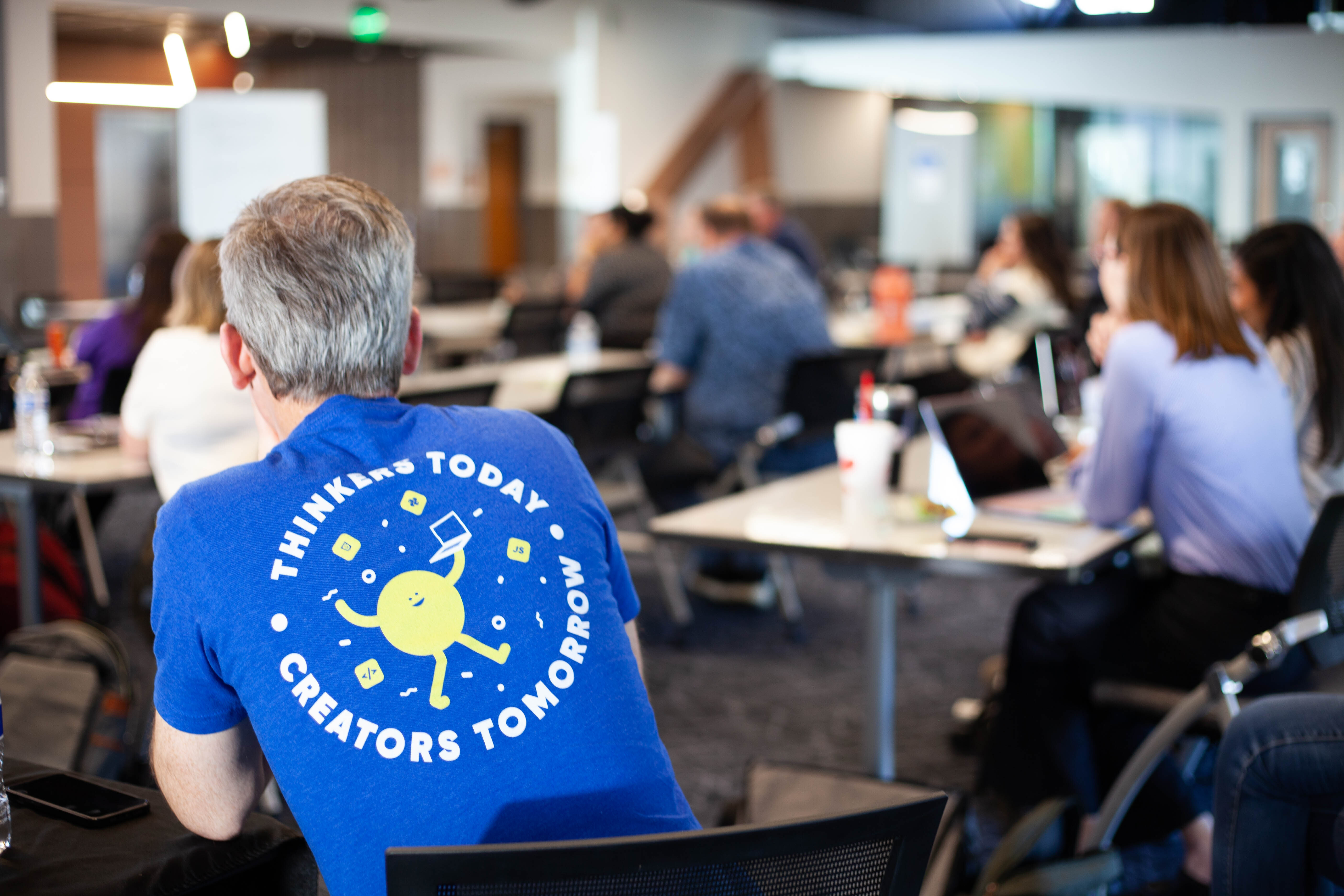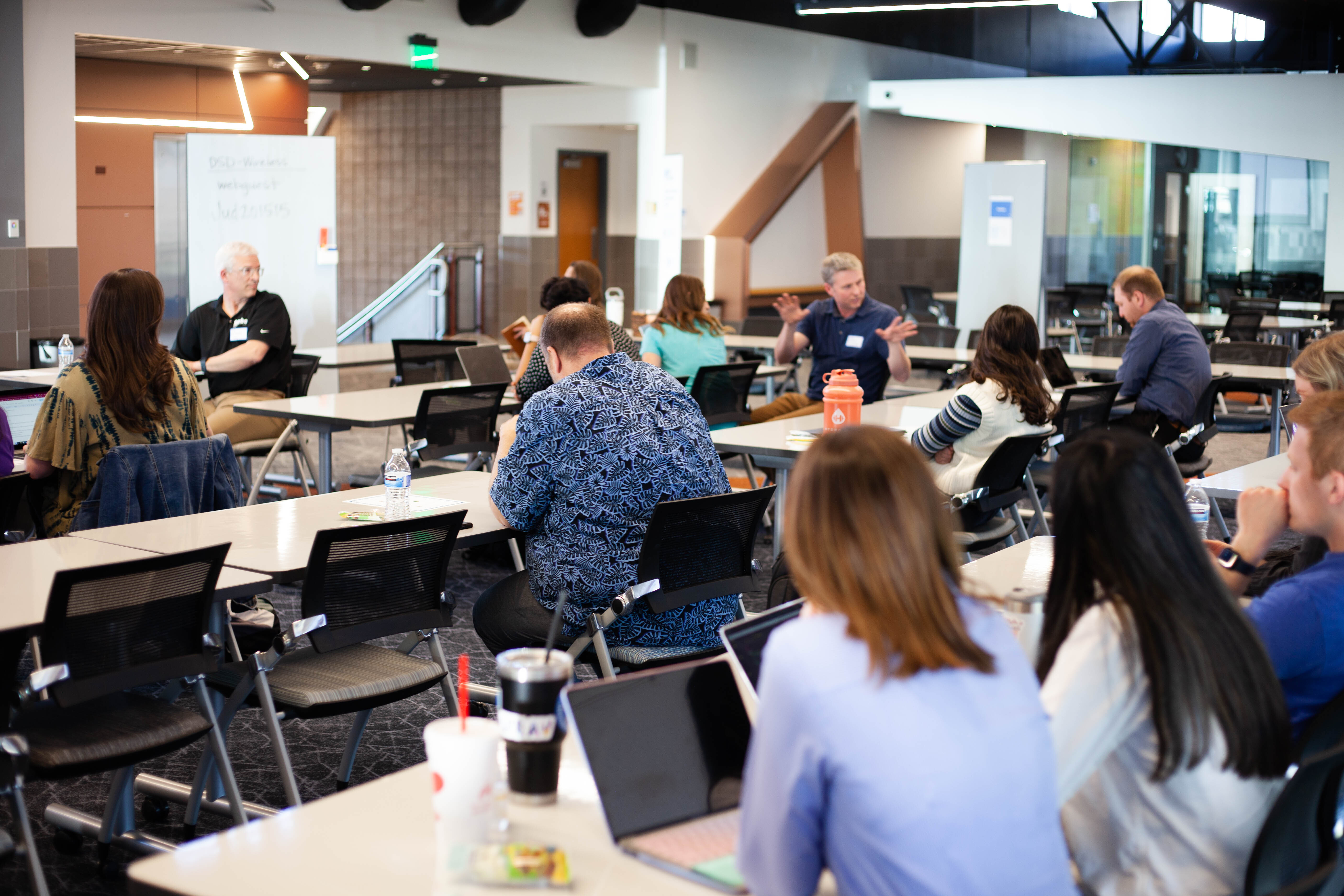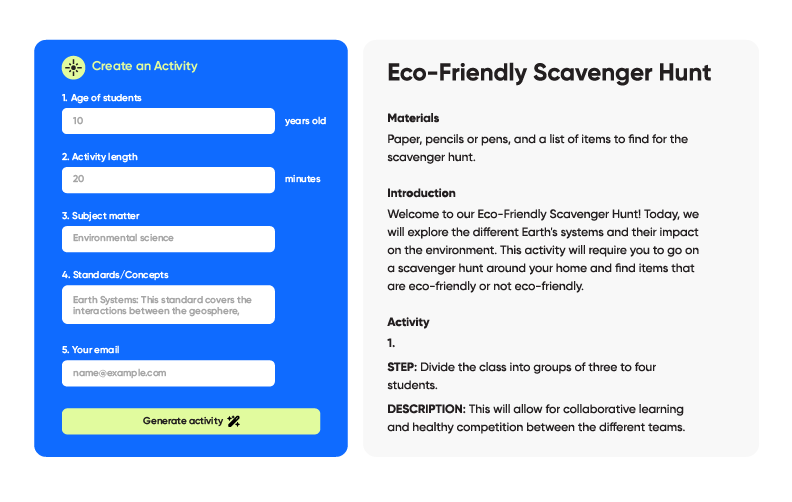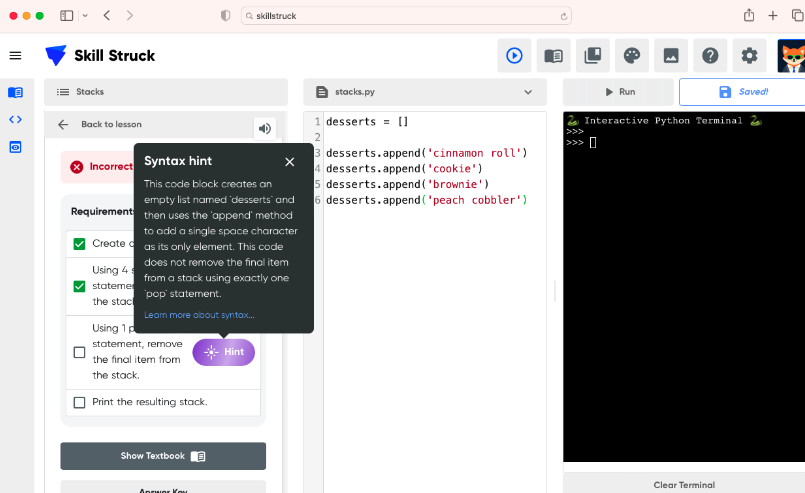
The introduction of Chat GPT and AI technology is causing us all to rethink what the future looks like for us and the next generation.
Researchers at the University of Pennsylvania did a report about the Early Look at the Labor Market Impact and found that “around 80% of the U.S. workforce could have at least 10% of their work tasks affected by the introduction of LLMs (large language models), while approximately 19% of workers may see at least 50% of their tasks impacted.”
In other words, AI is going to shift how we all work in a very big way. And K-12 education is no different.
AI in K-12 Education
Processing AI and its role in the K-12 education system has had many of us debating what should or should not be done. With the accompanying fears surrounding AI, we also see that AI has the ability to support and magnify our hard-working educators and engage our students.
In April 2023, we met with a group of Utah-based computer science (CS) educators at a Utah Skill Summit. Skill Struck’s CEO and Founder, Parker Gentry, facilitated a thought-provoking discussion on AI in K-12 education. The discussions were insightful and we want to share what was learned to support other educators adjusting to this new technology as well.

All participants in the discussion agreed that while we may not know what approach is right for each student, classroom, school, or district, we can work together to thoughtfully implement AI into the classroom experience.
Concerns about AI in the Classroom
Before diving into how AI can be positively used in the classroom, it’s important to recognize that there are valid concerns regarding its use. Some of these concerns that Utah educators are already dealing with include:
- The potential loss of authenticity and creativity.
- Over-reliance on AI.
- Loss of comprehension.
- Cheating.
These concerns are real, and it's important for educators to address them as AI continues to grow in availability and relevance. By recognizing these concerns, it’s possible to create boundaries for how teachers and students can and should use tools like Chat GPT in the classroom.
AI Technology: an Ability Multiplier for Teachers
There is a growing fear of AI taking over jobs. From our perspective, teachers are already overworked and overburdened and AI can help lighten their lift. By using AI as a tool, teachers can actually spend more time building relationships and helping students have a positive education experience and less time preparing lessons from scratch, grading papers, etc.
“Rather than viewing Chat GPT as an oracle replacing the student-teacher relationship, it is better to view it as a teaching assistant—able to do a great deal of routine legwork but in need of review, and sometimes corrections, by a human.” - Ray Ravalgia, Forbes
AI can be used as an ability multiplier for educators, not as a replacement. An ability multiplier refers to a tool that enhances or amplifies a particular skill or attribute, allowing an individual to perform at a higher level than they would otherwise be capable of.
With so much being asked of teachers, utilizing AI tools for grading, classroom management, learning personalization, curriculum development, and more can be a huge support and lighten the heavy load on teachers today.
Examples of Using AI to Lighten the Lift for Teachers
Movies since the beginning have shed a negative light on AI. But, we invite you to start thinking about AI in a different way–as a helpful tool. Over the past couple of months, Skill Struck has been very thoughtful about how to integrate AI into our platforms to help students and teachers in the classroom. Some examples of this include:
- Lesson Content Generator (Powered by AI).
Teachers spend a good amount of time creating new lesson plans for their students. Utilizing AI technology, our team has developed a Lesson Content Generator specifically designed to ease the workload of teachers.
With this tool, educators can create lesson and learning activities in a matter of minutes. By automating this process, teachers can focus on more important tasks, such as interacting with students and providing personalized instruction.

It’s important to remember that AI is not perfect. Using an AI tool like our Lesson Content Generator is great for going from 0% to 50-80% in an instant. This sparks ideas, gets the ball rolling and then the teacher can tweak it to work for their students and add their own personal teacher magic.
Here are some reasons to use this Lesson Content Generator:
- Feeling stumped? Get fresh ideas.
- Generate activities for ALL subjects, not just CS.
- Hit multiple standards with 1 activity (hello cross-curricular!)
- Customized Hints for Students.
In Skill Struck’s platforms, you can find thousands of auto-graded coding challenges in computer science (CS). We did this so any teacher, whether they have CS experience or not, can teach their coding.
Now, with the help of AI, students can receive more instantaneous custom hints that help steer them in the right direction in their learning. These custom hints will automatically pop up whenever a student has an error in their code or answers a checkpoint incorrectly. Instead of giving them an answer, they receive custom hints that help them problem-solve their way through the error.

These are just a couple of the ways Skill Struck is starting to think about AI and how it can help lighten the lift for educators in the classroom. Using feedback from our educators, we will continue to build products that meet their needs while also engaging students in a rigorous computer science education that prepares them for the future.
To learn more about Skill Struck, visit www.skillstruck.com.
Leave Your Comment Here